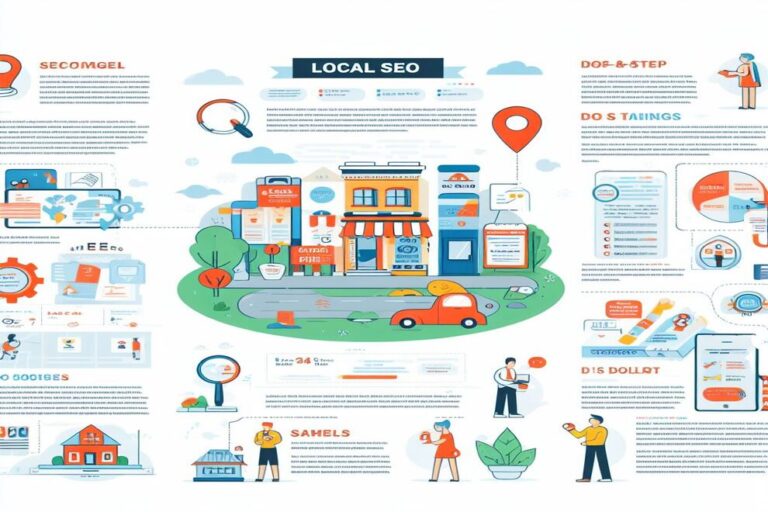Email Marketing: Building and Nurturing Your Customer List

Email marketing is one of the most powerful tools at a marketer’s disposal. It allows you to build, nurture, and leverage a list of interested customers and prospects to grow your business. In this comprehensive guide, we’ll explore the strategies and best practices for building and nurturing your customer email list to unlock the full potential of email marketing.
The Significance of Email Marketing
1. Direct and Personal Connection
Email is a direct and personal channel to communicate with your audience. Unlike social media or advertising, email marketing allows you to reach individuals in their inboxes, where they are more likely to engage with your content.
2. Cost-Effective
Email marketing is one of the most cost-effective marketing strategies. Compared to other channels, sending emails to a list of subscribers can provide a high return on investment (ROI).
3. Relationship Building
Email marketing is not just about selling; it’s about building and nurturing relationships. You can use emails to educate, inform, entertain, and engage your audience over time, creating loyal customers and advocates.
4. Targeted Messaging
With email marketing, you can segment your list and send targeted messages to different groups of subscribers based on their interests, behavior, and demographics. This personalization leads to higher engagement and conversions.
Building Your Customer Email List
1. Create an Attractive Signup Form
Your email list begins with the signup form on your website. Ensure that it is visually appealing, prominently displayed, and easy to fill out. Use compelling copy that encourages visitors to subscribe by highlighting the benefits they’ll receive.
2. Offer Incentives
Incentives are a powerful way to encourage email signups. Offer something valuable in exchange for an email address, such as a discount, an e-book, a free trial, or exclusive access to content or promotions.
3. Social Media Promotion
Leverage your social media presence to promote your email sign-up form. Share teasers about the exclusive content and offers your subscribers receive to entice your social media followers to join your email list.
4. Referral Programs
Encourage your current subscribers to refer their friends and colleagues by offering rewards or incentives. A referral program can significantly expand your email list while leveraging the trust and relationships your current subscribers have.
5. Content Marketing
Create high-quality content that attracts and retains visitors to your website. Use lead magnets, such as downloadable guides, whitepapers, or webinars, to capture email addresses from those interested in your content.
6. Events and Webinars
Promote your webinars, events, or workshops through email marketing. Registrants will provide their email addresses, expanding your list while increasing attendance.
Nurturing Your Customer Email List
1. Welcome Emails
A welcome email is the first message a subscriber receives after signing up. Use this opportunity to thank them, set expectations, and provide a warm introduction to your brand. Include a call to action to further engage with your content or products.
2. Segmentation
Segment your email list based on demographics, interests, behavior, or purchase history. Tailor your messages to each segment, ensuring that the content is highly relevant to the recipient.
3. Personalization
Personalize your emails by addressing subscribers by their name and offering content or product recommendations based on their past interactions with your brand.
4. Consistent Value
Deliver consistent value in every email. Whether it’s educational content, exclusive offers, or entertainment, ensure that each email provides something meaningful to the subscriber.
5. A/B Testing
Test different elements of your email campaigns, including subject lines, content, and calls to action, to optimize your messaging for engagement and conversions.
6. Automation
Leverage email marketing automation to send timely, relevant messages to subscribers. For example, set up automated email series for onboarding, abandoned carts, or post-purchase follow-ups.
7. Avoid Spammy Practices
Stay away from spammy practices, such as buying email lists or sending unsolicited emails. Focus on building a list of engaged subscribers who genuinely want to hear from you.
8. Quality Over Quantity
It’s more important to have a list of engaged and interested subscribers than a massive list of disinterested or inactive individuals. Focus on nurturing and retaining the subscribers who are genuinely interested in your brand.
Email Marketing Best Practices
1. Clear and Compelling Subject Lines
The subject line is the first thing recipients see. Craft clear, concise, and compelling subject lines that entice recipients to open your emails.
2. Mobile Optimization
A significant portion of email opens occurs on mobile devices. Ensure that your emails are mobile-responsive and display correctly on various screen sizes.
3. High-Quality Content
Deliver high-quality content that resonates with your audience. Write engaging and informative emails that provide value and encourage readers to take action.
4. Call to Action (CTA)
Each email should have a clear and compelling call to action. Whether it’s making a purchase, downloading a resource, or clicking a link, the CTA guides subscribers on what to do next.
5. Unsubscribe Option
Include a straightforward way for subscribers to opt out of your emails. Compliance with email regulations and respecting subscribers’ choices is crucial.
6. Testing and Optimization
Regularly test and optimize your email campaigns. Pay attention to open rates, click-through rates, and conversion rates, and make data-driven improvements.
Real-Life Examples of Successful Email Marketing
To illustrate the effectiveness of email marketing, let’s look at a couple of real-life examples:
1. Airbnb
Airbnb effectively uses email marketing to engage hosts and guests. They send personalized recommendations, booking reminders, and local experiences to keep users engaged with their platform.
2. Grammarly
Grammarly’s email marketing strategy focuses on user engagement and content promotion. They send weekly digest emails with personalized writing insights and offer educational content to help users improve their writing skills.
Measuring the Success of Email Marketing
Measuring the success of your email marketing efforts is vital to assessing their impact and making data-driven improvements:
1. Open Rates
Open rates indicate how many recipients opened your email. A high open rate suggests that your subject lines and sender name are effective.
2. Click-Through Rates
Click-through rates measure how many recipients clicked on links or CTAs within your email. A higher click-through rate indicates the engagement and interest of your subscribers.
3. Conversion Rates
Conversion rates track the percentage of email recipients who took a desired action after opening your email. This could be making a purchase, signing up for a webinar, or downloading a resource.
4. List Growth Rate
Monitor the rate at which your email list is growing. A healthy growth rate suggests that your strategies for acquiring new subscribers are effective.
5. Unsubscribe Rate
Keep an eye on your unsubscribe rate to assess the health of your email list. An unusually high unsubscribe rate may indicate that your content or frequency needs adjustment.
6. Revenue Generated
Track the revenue generated from your email marketing efforts. Calculate the ROI by comparing the revenue earned from email campaigns to the costs.
Conclusion
Email marketing is a cornerstone of digital marketing, offering an effective way to build and nurture relationships with your audience. By employing strategies for building your email list, and using best practices for nurturing and engaging your subscribers, you can unlock the full potential of email marketing for your business. Remember that it’s not just about the quantity of subscribers; it’s about the quality and engagement of your email list that truly drives success. Make email marketing an integral part of your marketing strategy and watch your customer relationships and business growth flourish.





